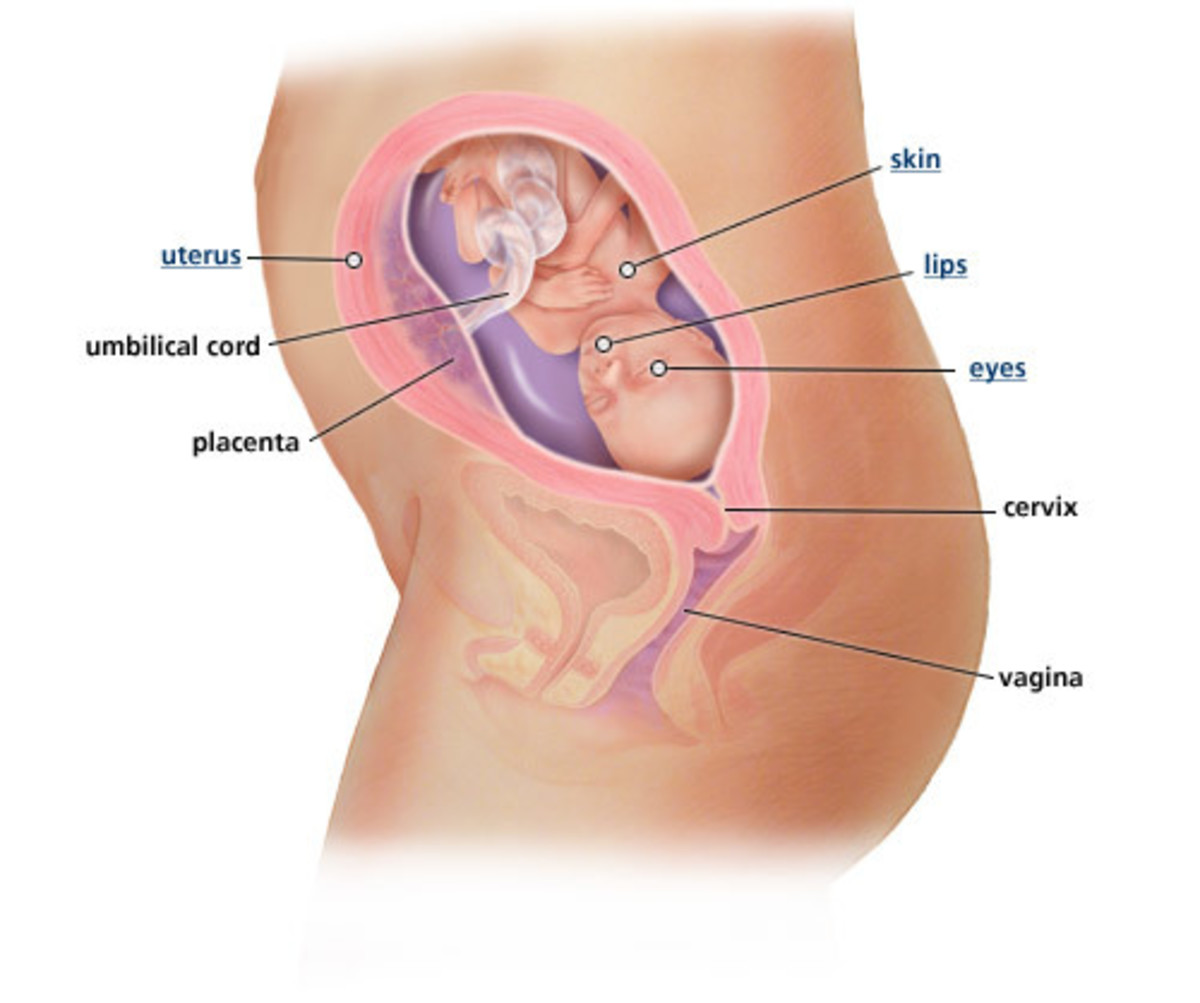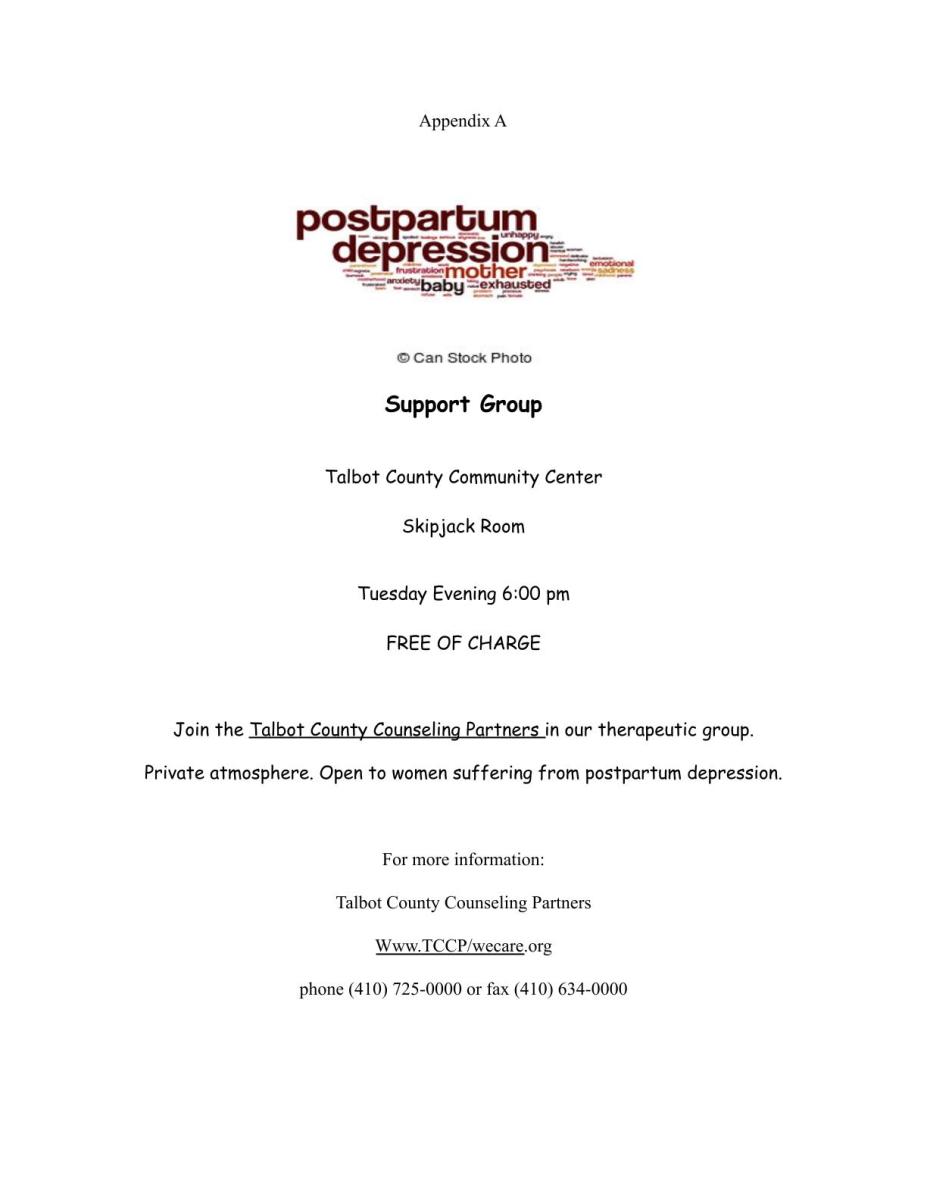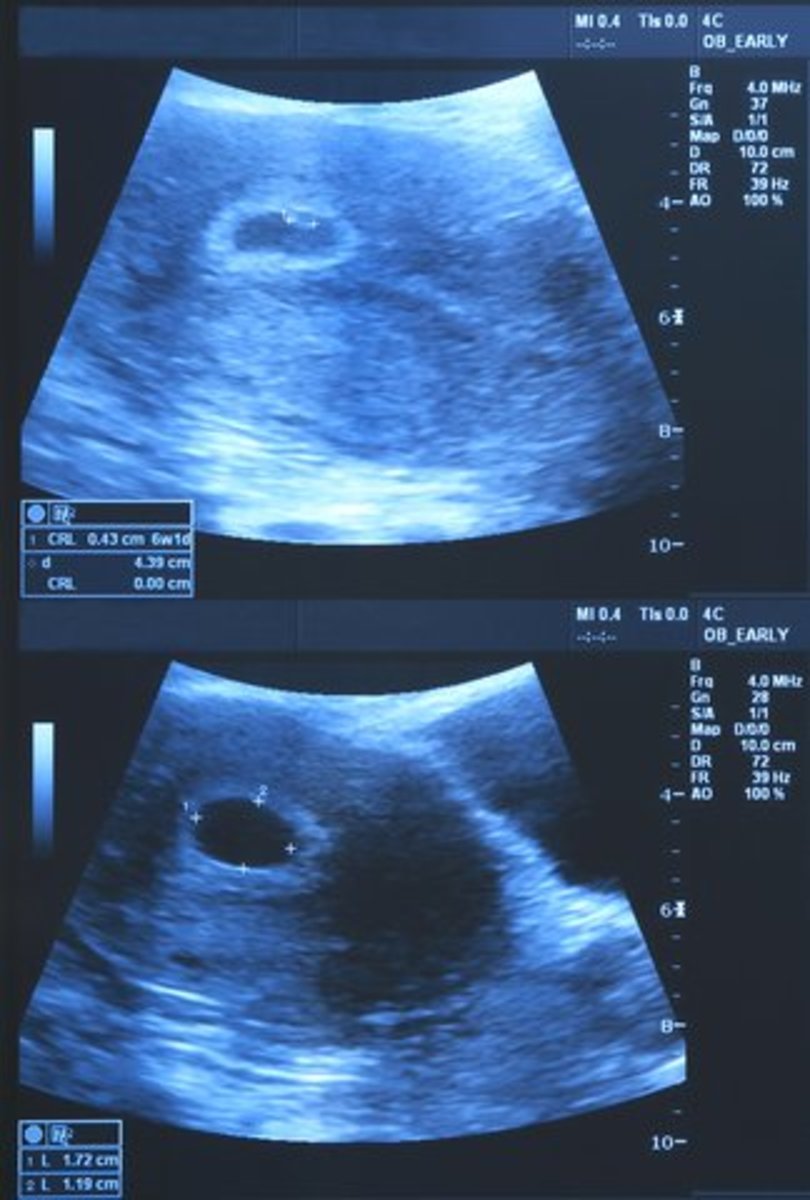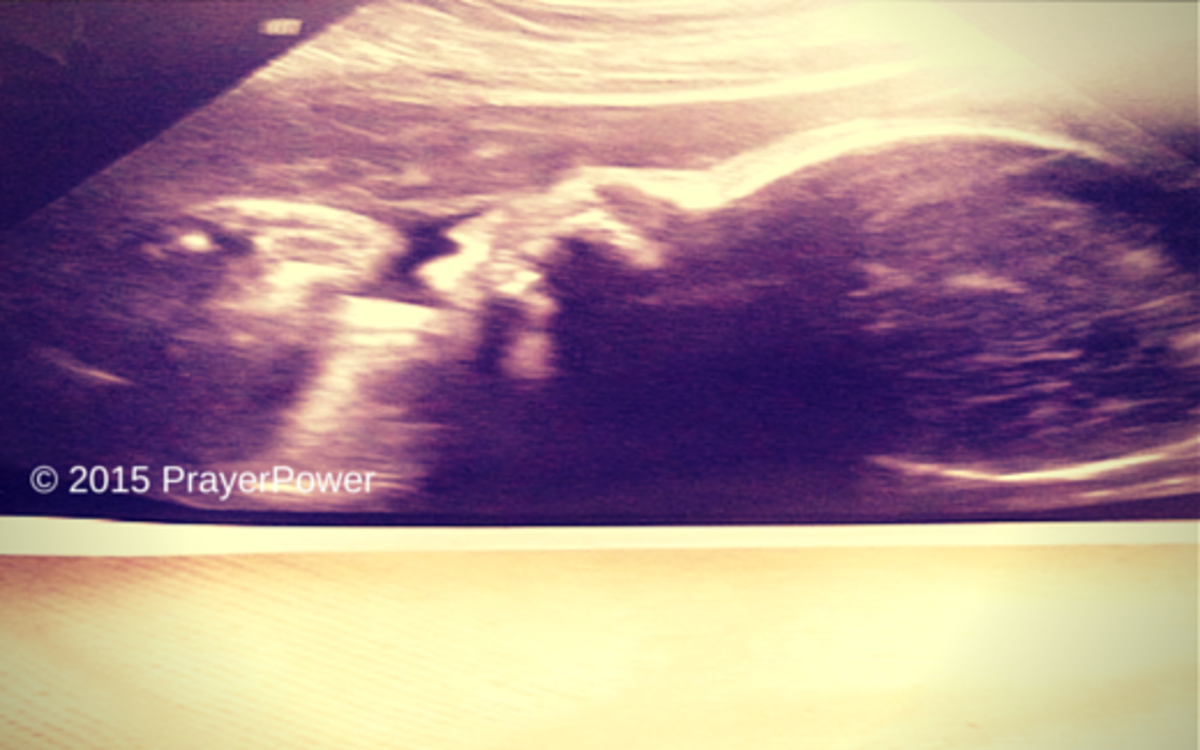Being Pregnant

Pregnancy is the presence of a developing offspring in the uterus; it is a period normally 9 months when a woman carries a child in her womb (uterus).
During ovulation in the female reproductive cycle, an egg cell (ovum) is released in the uterine tube. Therefore, during sexual intercourse, the male deposits a sperm cell in the vagina near the cervix. The cervix secretes a thin, watery fluid during the first part of menstrual cycle, which promotes sperm transport and survival. Within one hour after sexual intercourse, the sperm cell reaches the upper portions of the uterine tube. As the sperm cells meet with the egg cells (ovum), only one out of the millions of sperm cells fuses with the egg cell (fertilization). This process discussed above result into pregnancy.
There are three stages in pregnancy:
(1) First trimester (1st-3rd months)
(2) Second trimester (4th-6th months)
(3) Third trimester (7th-9th months).
SIGNS OF PREGNANCY
When a woman is pregnant, certain signs occurs and these signs are normal, some of this signs varies in individual.
(1) missed period (first sign)
(2) Nausea and vomiting
(3) Frequent urination (this is because during pregnancy, the womb presses against the bladder thereby causing frequent urination).
(4) Gradual increase in the size of the stomach.
(5) The breast increases in size.
(6) A dark line appears on the belly from the umbilical downward.
(7) A pregnant woman spits (varies in individual).
(8) The movement of the fetus in the womb around fifth month of pregnancy.
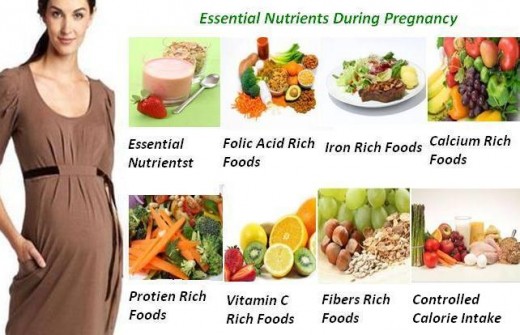
HOW TO MAINTAIN A HEALTHY LIFE DURING PREGNANCY
During pregnancy, it is very important to eat not only very often but to eat a balance diet meal. It is good to well because the body needs enough of all food especially those food rich in protein, vitamins, and minerals (especially iron) in order to have a healthy baby.
WHAT TO AND WHAT NOT TO CONSUME DURING PREGNANCY
(1) A pregnant woman should eat main foods such as
-cereals and grains e.g. maize, rice, millet, and sorghum.
-starchy roots e.g. cassava, and potatoes.
-starchy fruits e.g. banana and plantain.
-vegetables: a pregnant woman should eat many vegetables, fruits for vitamin and minerals. She should also eat bodybuilding foods such as beans, eggs, chicken, meat, fish, and milk products.
Poor nutrition during pregnancy causes weakness and anemia in the mother and increases risk of the child dying or other complications during and after childbirth. Poor nutrition can also be a cause of miscarriage sometimes.
(2) using of iodize salt: the use of iodize salt increases the chance of the child being born alive and also prevents a child from being retarded, but not too much intake to avoid swelling of the feet and other problems.
(3) Intake of alcohol and smoking: intake of alcohol and smoking during pregnancy is very risky, should be avoided as it can harm both the mother and her baby.
(4) Intake of medicines: during pregnancy, an expectant mother should avoid some certain drugs except when being recommended by a doctor. Intake of drugs not prescribed by the doctor may be harmful to the developing fetus.
(5) Cleanliness: a pregnant woman should always keep clean at all times, she should bath regularly and brush every day.
(6) Exercise: she should always engage in exercise regularly to maintain a good body fitness and to be strong for both herself and her unborn child.
PROBLEMS OF PREGNANCY
There are minor problems most pregnant women encounter, and they include the following and ways to solve them.
MINOR PROBLEMS
| WAYS TO SOLVE THEM
| |
|---|---|---|
Nausea and vomiting
| To lessen this, eat something dry like dry bread before getting out of bed, and avoid oily foods.
| |
Swelling of the feet
| The woman should rest with the feet raises up; she should also eat less salt.
| |
Low back pain
| a pregnant woman with low back pain should engage in exercise and try sitting and standing with her back straight
| |
Burning of pain
| this occurs as a sign of acid indigestion and heartburn. It will help to avoid taking antacid, then sleep with chest and head always lifted up with pillow.
| |
Swollen veins
| these are common in pregnancy, it occurs due to the weight of the fetus pressing on the veins that come from the leg. To solve this problem, you need to put your feet up often as high as possible.
|
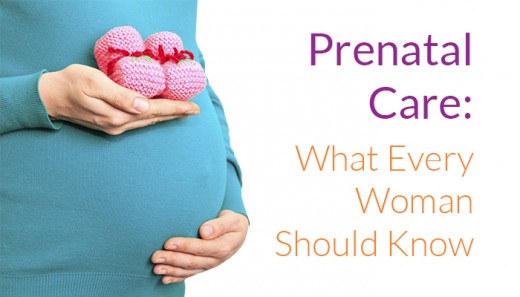
PRENATAL CARE DURING PREGNANCY
Pregnant women are encouraged to go for regular prenatal check-ups, in the process of the check-up, you as an expectant mother learns how to prevent some problems you are encountering. During the prenatal care, you discuss your problems pertaining your health and baby with the doctors or nurses. Through this care, you undergo certain assessment, which includes the following.
(1) Weight gain: at each visit as a pregnant woman, you will be checked for weight gain or loss because normally a pregnant woman should gain at least 8 - 10 kilogram during the ninth month. Any reduction or sudden weight gain in the last month is a danger sign.
(2) Danger signs: danger signs are being checked during this visit. Such signs as sudden weight gain increase in blood pressure, bleeding, swelling of hands and face, severe anemia. If any of these signs appear then you need medical care as soon as possible for your safety and that of your baby.
(3) Checking of vital signs: it is very important to take the vital signs at each visit, such signs as body temperature, pulse, blood pressure, and respiration in order to make sure you and your baby are ok, and if any problem results then a proper medication will be given to avoid complications during birth.
(4) The growth and position of the fetus: at each visit the pregnant women womb is felt, normally the womb is usually two fingers higher each month and at 4 and 1/2 month, it is just at the level of the navel. The position of the baby is being felt and the normal position of the baby at birth is always head down.
(5) Baby's heartbeat (fetal heart rate): After 5 months the baby’s fetal heart rate is being checked with an instrument called fitoscope. The baby's fetal heart rate beats about twice as fast as adults do; it is normally 120-160 per minute. Checking the baby's heart rate also help to determine the position of the baby. It happens like this
* If the baby's heartbeat is heard loudest below the pregnant woman's navel in the last month, then the fetus head is downward.
* but if the baby's heart beat is heard loudest above the navel, then the fetus head is probably up, meaning it may be a breech birth ( coming out with the buttock).
(6) Tetanus vaccination: this vaccination is being given to you during prenatal care to prevent tetanus in the newborn. It is being given at 6th, 7th, and 8th month if it is the first pregnancy (primip), but if not the first then probably you've been vaccinated against tetanus, therefore you will be given one booster during the 7th month.
HOW YOU CAN TELL WHEN YOU ARE LIKELY TO GIVE BIRTH
The expected date of delivery (EDD) can be calculated in two methods.
FIRST METHOD: in this method, you write down the date when your last menstrual period begun (LMP), subtract 3 months then add 7 days.
For example, supposing your last menstrual period began April 5 2016 meaning 4 /5 /2016
-3 +7
=1, 12, 2016
Therefore, your expected date of delivery will be on or around 12th of January 2017.
SECOND METHOD: In the second method you take the same procedure as in example one by writing down the date of your last menstrual period (LMP), add 9 months to the month of April and also add 7 days to the day. Using the same example above as April 5 2016 i.e.:
4 /5 /2016
+9 +7
=13, 12, 2016
In this case, there is no month as the thirteenth month in a calendar, therefore what you should do is minus 13 from 12 month, and then your answer is 1, so finally your expected date of delivery is around 12th of January 2017.
HOW TO CALCULATE THE EXPECTED GESTATIONAL AGE (EGA)
As a pregnant woman, probably you've been seeking to know the age of the fetus in your womb, well this is a solution. To calculate the EGA, you have to write down the date when your last menstrual cycle began, minus the remaining day in the month from the main date. Write down the answer then starting from the next month write down the total number of days until the present month you are in, after then sum up the dates and divide by 7. Your answer is the age of the fetus.
for example: supposing your LMP is on the 18th of February and you are presently in the June 5th, minus the reaming days in the February from the date of your LMP like this: 28-18= 10 then begin to add the total number of days from the month of march to June 5th.
SOLUTION: FEBRUARY = 10
MARCH = 31
APRIL = 30
MAY = 31
JUNE = 5 SUMING UP TO: 10+31+30+31+5= 107% 7
=15.2
The expected gestational age is 15 weeks and 2 days old.



